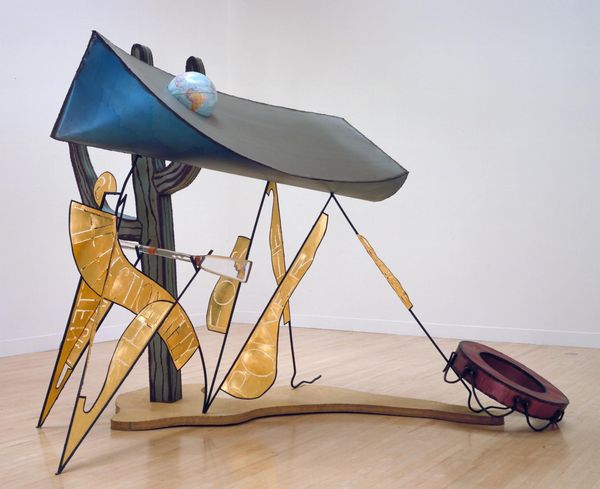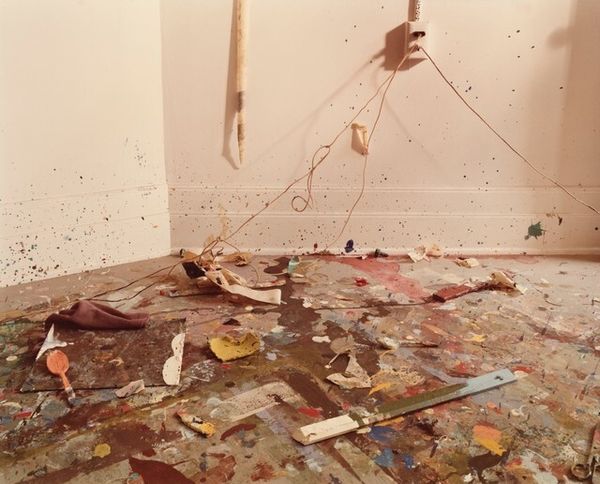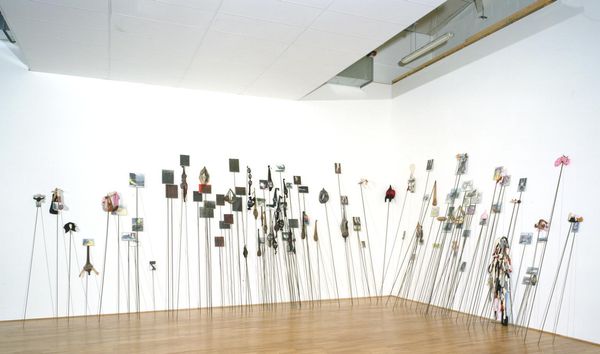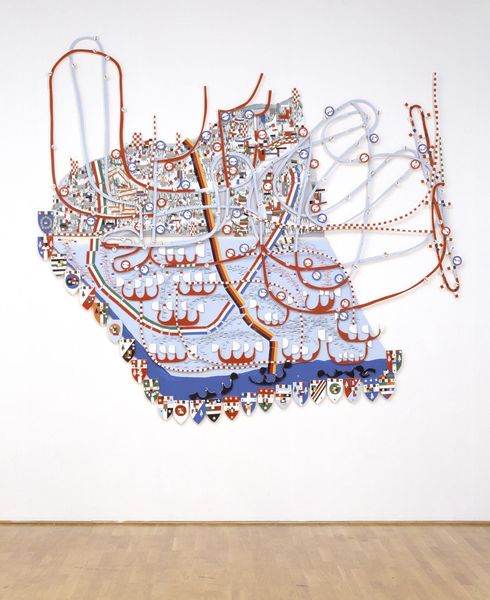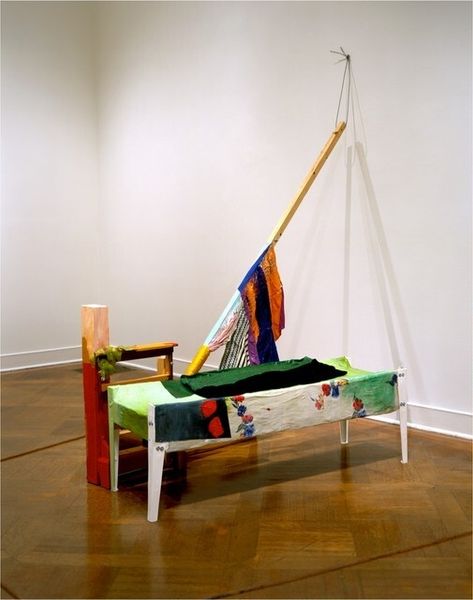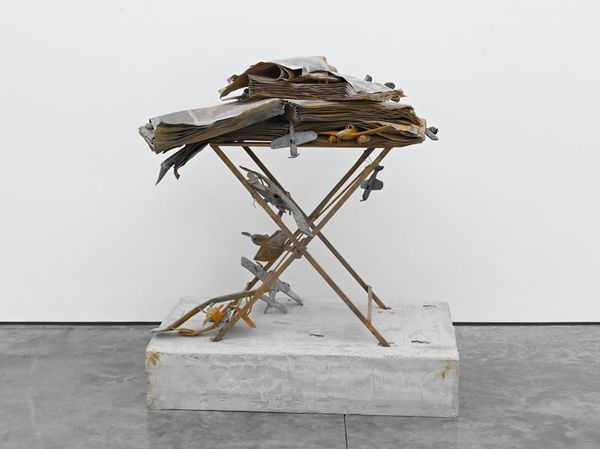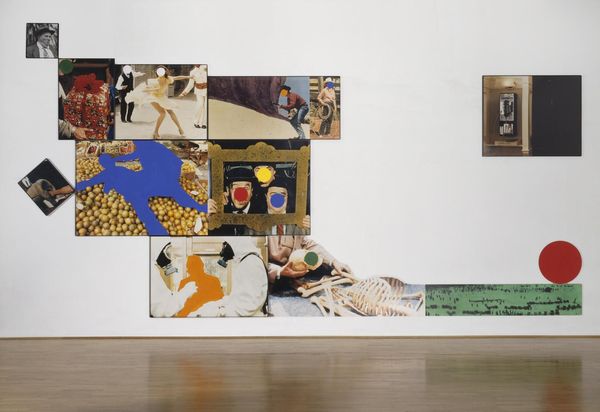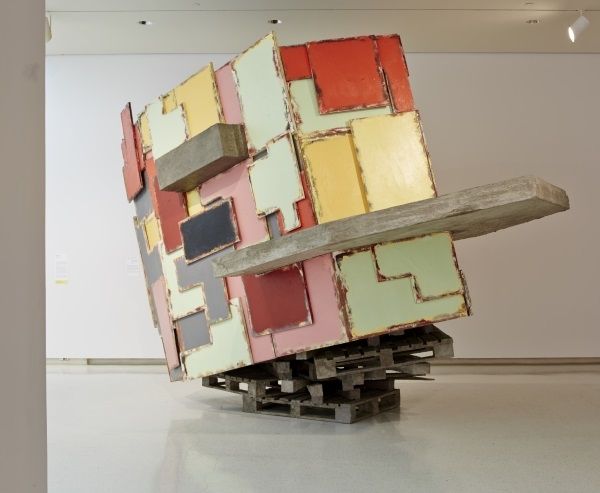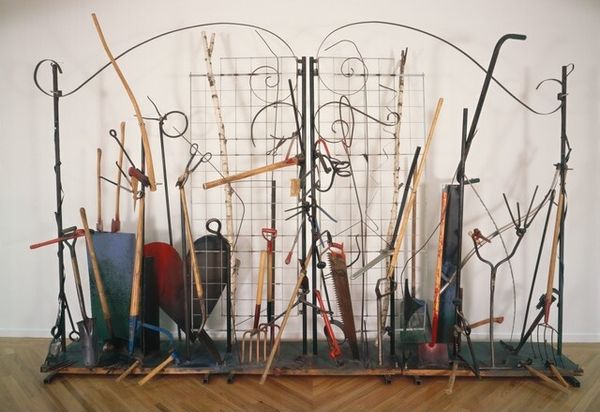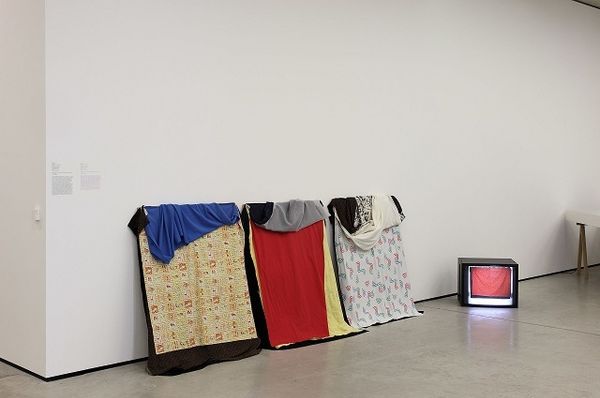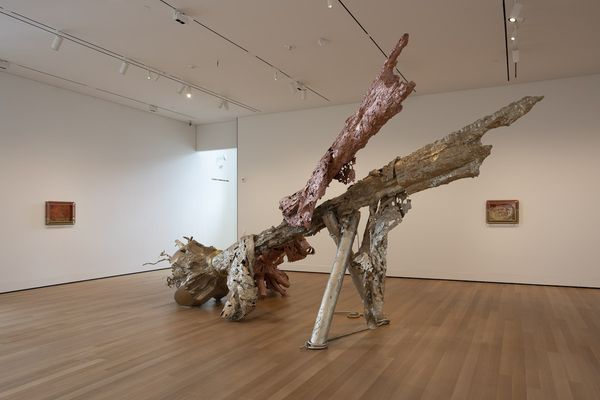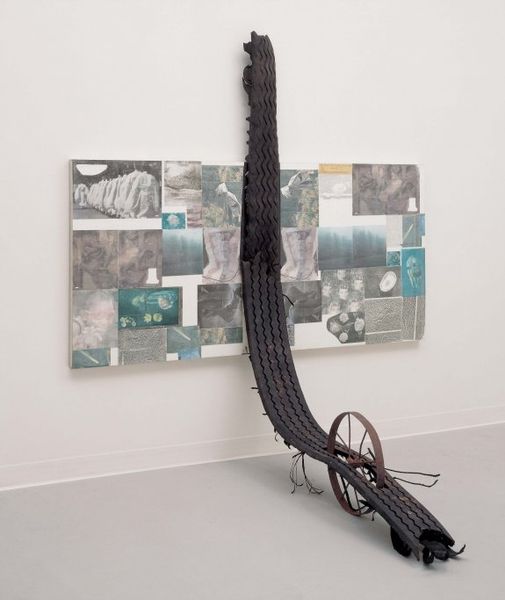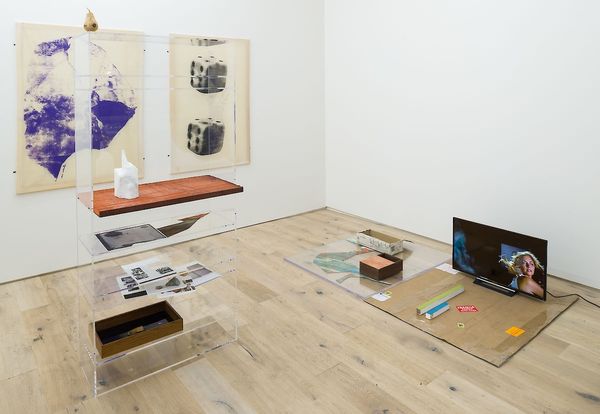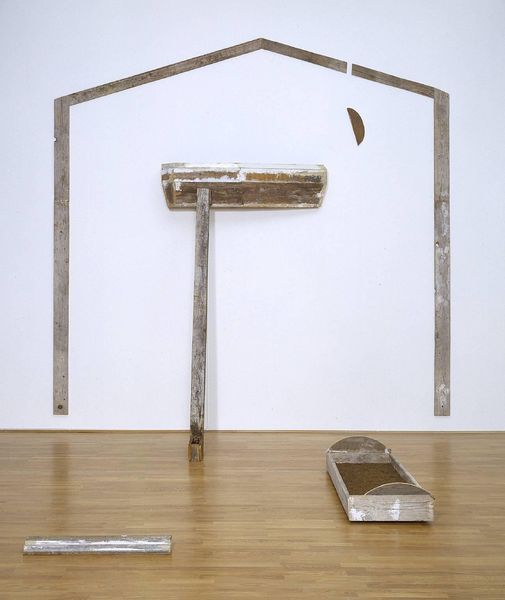
Dimensions: displayed: 3850 x 8200 x 4650 mm
Copyright: © Bill Woodrow | CC-BY-NC-ND 4.0 DEED, Photo: Tate
Curator: This is Bill Woodrow's "Elephant," a powerful construction from found materials. I’m struck by the contrast between its playful appearance and somber message. Editor: The composition certainly grabs your attention, doesn't it? The elephant's head and trunk descending towards a circle of car doors—a striking juxtaposition of shapes and textures. Curator: Woodrow often used discarded objects to address themes of consumerism, waste, and global politics. The maps with missing continents hint at colonial exploitation and environmental damage. Editor: Yes, the use of maps as the elephant’s ears immediately suggests themes of geography and power. The car doors forming a circle introduce a ritualistic element. Curator: Absolutely. The circle perhaps represents a cycle of destruction or, conversely, a symbolic attempt at repair. The elephant itself, a symbol of wisdom and memory, seems to mourn the losses. Editor: I find the materiality fascinating. The rough edges and varied colors of the doors, juxtaposed with the smooth, almost cartoonish trunk, create a visual tension that’s hard to ignore. Curator: It really is a complex statement about our relationship with the environment and the legacies of the past. Editor: Indeed. A compelling exploration of form and meaning, inviting us to contemplate our role in shaping the world.
Comments
Join the conversation
Join millions of artists and users on Artera today and experience the ultimate creative platform.
tate 8 months ago
⋮
Woodrow has commented: 'The head, mounted colonial fashion on the wall, was constructed around an ironing board because of its triangular shape and strong frame. I used the ear shape of some old wall maps of Africa and South America... The fact that they are third world continents soon became the point of the work. I thought of jungles, deserts, shanty towns, natural forces, technology, tribes, revolutions¿ This finally produced an elephant lifting an automatic weapon from a water hole, with the car doors I had found at a breaker''s yard forming its banks.' Gallery label, October 2000
